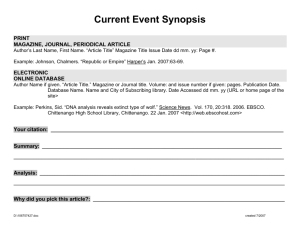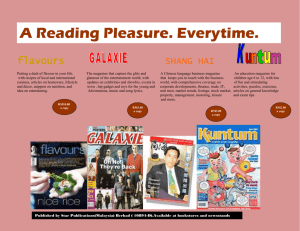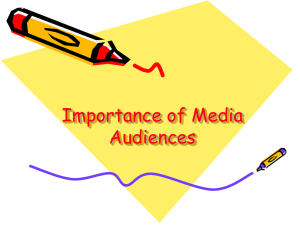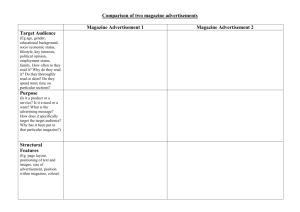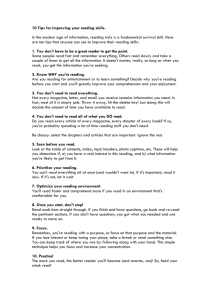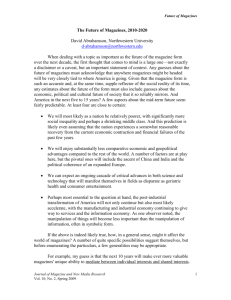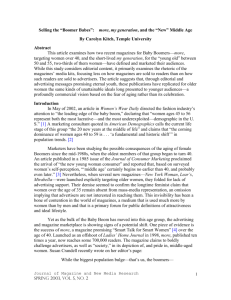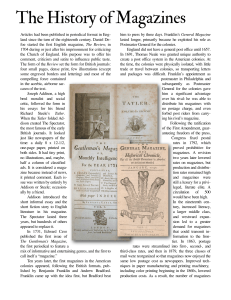The History and Evolution of Magazines
advertisement
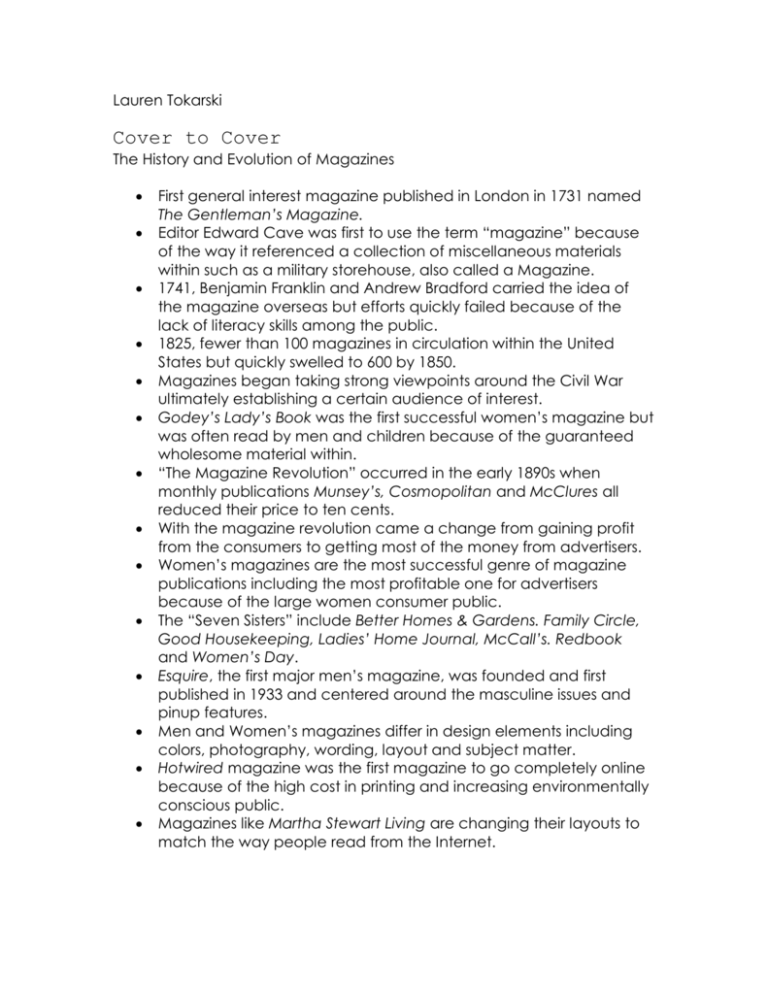
Lauren Tokarski Cover to Cover The History and Evolution of Magazines First general interest magazine published in London in 1731 named The Gentleman’s Magazine. Editor Edward Cave was first to use the term “magazine” because of the way it referenced a collection of miscellaneous materials within such as a military storehouse, also called a Magazine. 1741, Benjamin Franklin and Andrew Bradford carried the idea of the magazine overseas but efforts quickly failed because of the lack of literacy skills among the public. 1825, fewer than 100 magazines in circulation within the United States but quickly swelled to 600 by 1850. Magazines began taking strong viewpoints around the Civil War ultimately establishing a certain audience of interest. Godey’s Lady’s Book was the first successful women’s magazine but was often read by men and children because of the guaranteed wholesome material within. “The Magazine Revolution” occurred in the early 1890s when monthly publications Munsey’s, Cosmopolitan and McClures all reduced their price to ten cents. With the magazine revolution came a change from gaining profit from the consumers to getting most of the money from advertisers. Women’s magazines are the most successful genre of magazine publications including the most profitable one for advertisers because of the large women consumer public. The “Seven Sisters” include Better Homes & Gardens. Family Circle, Good Housekeeping, Ladies’ Home Journal, McCall’s. Redbook and Women’s Day. Esquire, the first major men’s magazine, was founded and first published in 1933 and centered around the masculine issues and pinup features. Men and Women’s magazines differ in design elements including colors, photography, wording, layout and subject matter. Hotwired magazine was the first magazine to go completely online because of the high cost in printing and increasing environmentally conscious public. Magazines like Martha Stewart Living are changing their layouts to match the way people read from the Internet.



